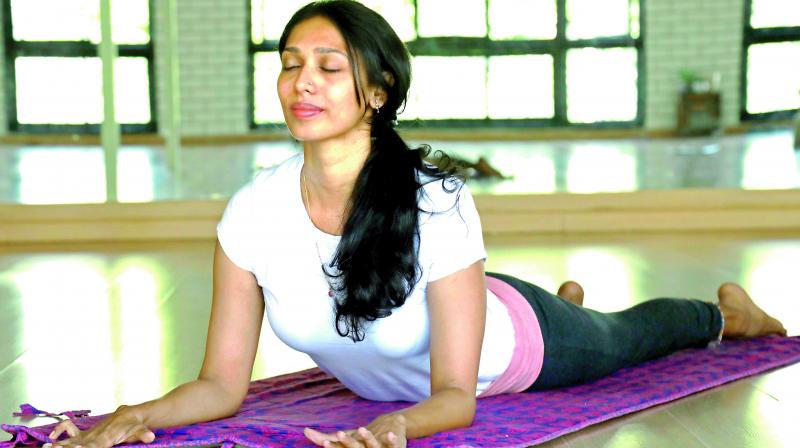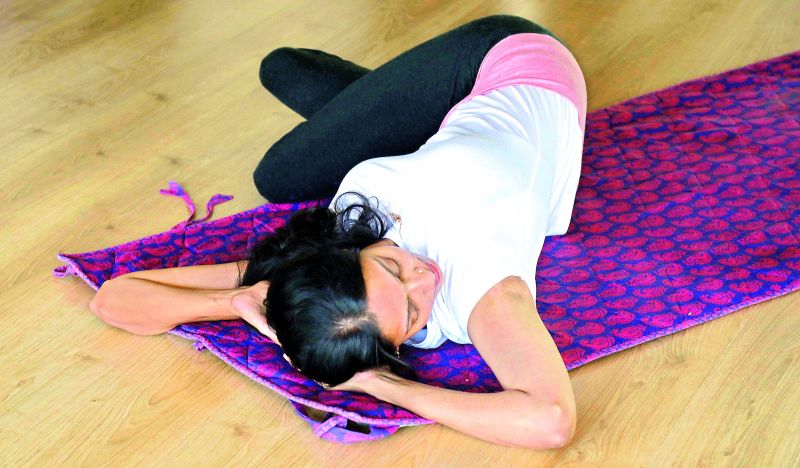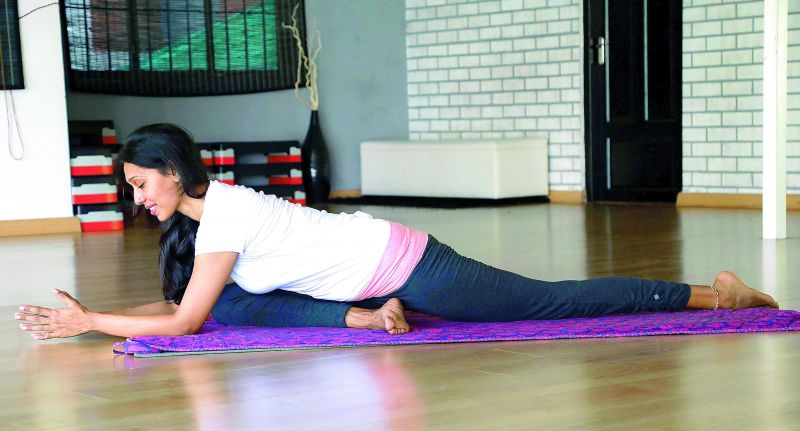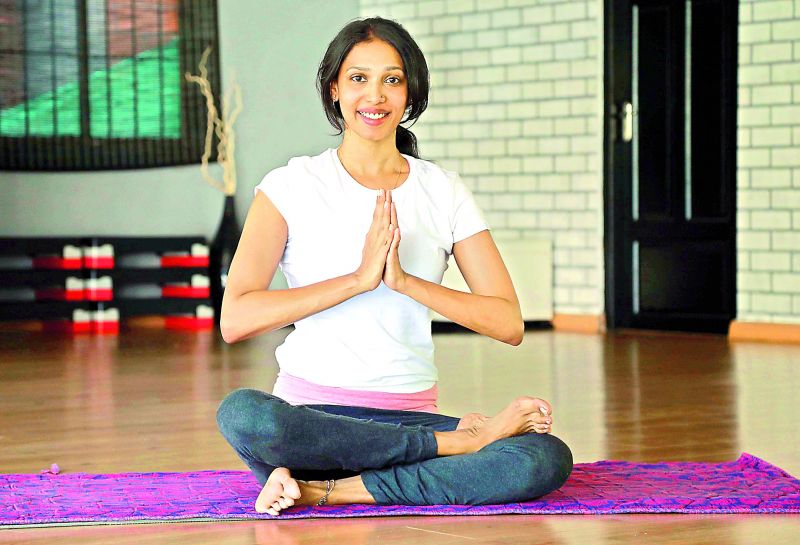Art of balancing yin and yang
We need a combination of both yin and yang yoga to be a balanced and complete being.

In Chinese philosophy, everything is either yin or yang. Yang is left-brained, high energy, driving, productive, logical, detail-oriented, "masculine" energy. Yin is right-brained, feeling, sensing, imaginative, quiet, introspective, reflective, "female" energy. Keeping the concepts of yin and yang in mind, one can easily see that Western approach to yoga-as-fitness is mostly yang. When the muscles are engaged for athletic prowess, standing and moving with strength, this is the engagement of yang energy.
But as we grow older, our bodies get stiffer. We also need to work our tendons, ligaments, fascia surrounding muscles and joints to prevent stiffness and other problems like frozen shoulders and arthritis from creeping in. The way to work them is different from the way to work muscles - because joints, tendons and ligaments are more plastic in nature as compared to muscles which are elastic. Therefore, we need to stress them in a different way.
Yin works with the fibrous tissues; therefore, it uses slightly different asanas and exerts gentler pressure for a longer time. But at the same time, it can be intense. The practitioner holds poses for three to eight minutes or sometimes even longer. This helps create space and strengthen the joints, and keep the connective tissues in good health. We need to do both in our lives for a holistic and complete yoga practice. I have personally seen tremendous benefits in practicing yin yoga; it greatly complements hatha and vice versa.
Yang is the masculine energy while yin is feminine. We need a combination of both to be a balanced and complete being.
— The writer is a yoga and meditation consultant based in Kochi.
Sphinx
Lie down on your stomach on your carpet or mat. Bring your elbows in close by your chest. Prop yourself up on your forearms. Make sure your elbows aren't too far back or your shoulders will eventually feel very heavy. You may chose to keep your forearms straight and parallel to one another, with your palms down on the ground, for support. Legs are apart. Gently lift your head, neck and chest. You can hold this pose for three-five minutes.
 Twisted Root
Twisted Root
Twisted Root
Lying on your back, draw both knees into your chest. Take your right leg and cross it over the left, continuing to twist your right foot under your left ankle, like the leg position is shown in the photo. Open your arms to the side like wings or clasp behind head, and drop the knees to the left side. Look towards the opposite side. If the knees are higher, this moves the twist to the upper back; lowering the knees moves the twist more to the lumbar/sacrum.
 Swan
Swan
Swan
You can come into this pose either from Down Dog (which is more advanced) or from Cat Pose (on hands and knees). Slide your right knee between your hands, lean a bit to the right, and check in with how your right knee is going to feel. If the knee is fine, flex the right foot and move it forward; if the knee feels stressed, bring the foot closer towards the right hip. Now, centre yourself so your weight is even. Try tucking the back toes under and sliding the back knee away. Do this a few times until your right buttock is on the floor or as low as it is going to get.
 Ankle Stretch
Ankle Stretch
Ankle Stretch
Begin in a kneeling position, sitting on the heels. Place both hands on top of the knees or on the ground by the sides of the knees. Gently lean back until the shins and knees lift off the floor. Maintain the length of the spine so that you resist collapsing through the spine. Don't let the head fall back and overextend the neck. If you are feeling comfortable and balanced here, you can bring your palms to your chest. Hold for a minute. Before going into the pose with both legs, do one side at a time first, to test your ankles and how they feel. Often, one ankle may be more closed than the other, so if you start off doing the full pose right away, you will not be aware of any issues.
 Square Pose
Square Pose
Square Pose
Sit cross-legged with your left shin on the floor, roughly parallel to your torso, and your right shin on top of the left, the right outer ankle resting on top of the left thigh near the knee. This pose stretches the connective tissue of the outer thighs and buttocks, stimulating the kidney, liver, and gall bladder meridians. If possible, bend forward to provide a stretch for the lower spine. As with all yin poses, start out conservatively, taking a position you can gradually deepen for three-five minutes, rather than starting with a more aggressive pose.

